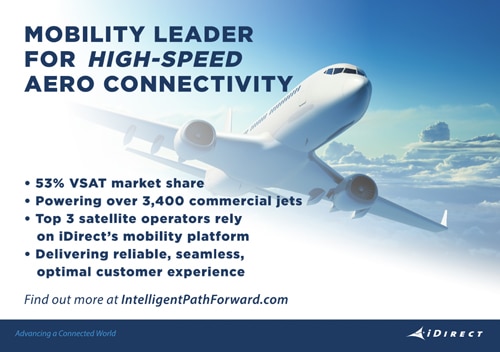Today, airlines want greater business value from their onboard networks. So, they’re expanding connectivity beyond just passenger Wi-Fi to transform their entire aircraft operations. Valour Consultancy estimates that the connected airline could save the aviation industry over $1 billion annually.
However, this new vision of the “connected aircraft” present a whole new challenge for airlines and their in-flight service providers. It equates to managing a global wireless network in the sky that serves a much broader suite of applications and end-users, all of which are vying for contested bandwidth. In this context, it is increasingly difficult to ensure a reliable, consistent service, and manage costs.
In a new article published in Mobility World, iDirect’s Sef Senhaji, spells out key innovations to address these challenges:
- Bringing HTS capacity onboard in the immediate future, while developing a long-term plan to integrate capacity across all orbits.
- Improving how airlines share bandwidth across their entire fleet and myriad applications.
- How regional airlines can adopt inter-provider roaming agreements to economically and quickly expand their service areas.
- Adopting ground-breaking new flat-panel antennas design and software-defined aero modems to lower their capital and operating costs.
Today’s in-flight connectivity challenge is about meeting rising customer expectations while allocating a broader pool of bandwidth to feed connected aircraft applications. What is the right capacity to source? What is the best use of that capacity? Where are the greatest returns? Where can costs be lowered? How can technology lifecycle be expanded?
Check out Sef’s article for some timely answers.
